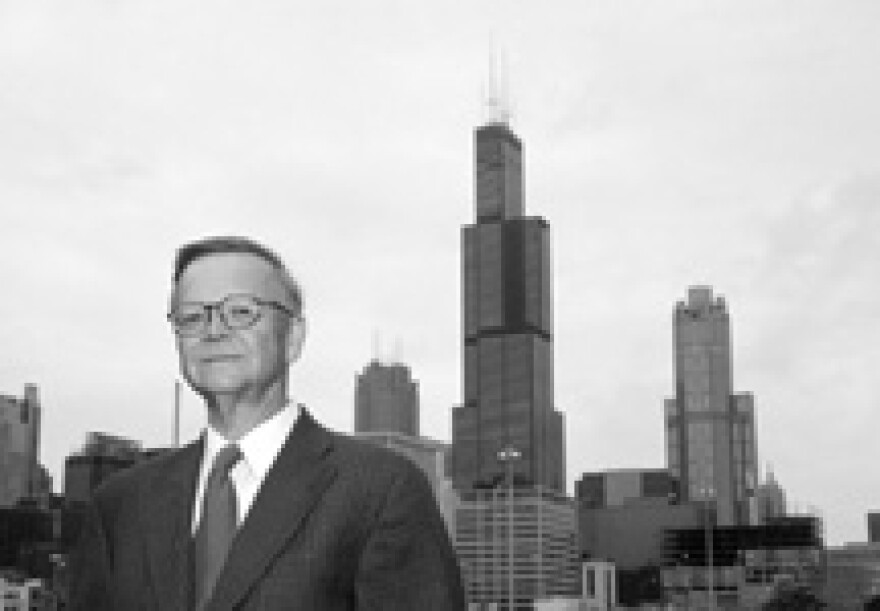Chicago politicians spend a lot of time decrying and denying the decades-old description of their home town as the most segregated city in the north. Then, every 10 years, they put a lot of effort into proving it.
It's that time of the decade when Chicago's 50 aldermen and one mayor have to put their agreements aside and start redrawing Chicago's ward map, under which they must live, serve and run for election until the United States counts residents again in 2010. Chicago isn't alone in the need to reapportion political representation, but in this city that exercise stirs up a spicy blend of partisanship and race. This time, there's a distinctive flavor of salsa, as well. While most representational maps are drawn with an eye to Republicans and Democrats, Chicagoans must render their political calculations in black, white and Hispanic, just to satisfy pesky U.S. Supreme Court rulings.
So how do matters stand? At the end of the millennium, the 50-member Chicago City Council had 23 white aldermen, 20 black aldermen and seven Hispanic aldermen. But the Hispanic population has grown enormously in Chicago, and, though voting turnout in existing Latino wards is notoriously low, there is a major demand this year for more Hispanic-dominated city wards. Lots more. Incumbent Hispanic aldermen are mulling a new map that would add five Hispanic-majority wards, while the Mexican American Legal Defense and Educational Fund, a private group that spent much of the 1990s fighting the current map in court, wants six.
Under this scenario, somebody else would get the short end. Though the city's African-American population growth was surpassed by Hispanic gains, incumbent black aldermen at least want to keep all 20 of their wards. So, presumably, do the 23 white aldermen. Under the law, it all has to add up to 50, so someone has to give.
Chicago is supposed to draw a new map by December 1, or deliberations will end up in court. They probably will anyway. Nothing in Chicago, especially in politics, is simple.
Chicagoans must render their political calculations in black, white and Hispanic, just to satisfy pesky U.S. Supreme Court rulings.
And there are other quirks that make things interesting. For starters, thereÉs Ald. Richard Mell, who as head of the councilÉs Rules Committee, is the guy in charge of the remap process. MellÉs Northwest Side ward already is heavily Hispanic and the Hispanic plan would make it even more so. It is worth noting that Mell is a German American whose son-in-law is U.S. Rep. Rod Blagojevich, a Serbian American who wants to be elected governor with the help of ChicagoÉs black, Hispanic and Asian voters.
Then thereÉs Ald. Edward Burke, one of ChicagoÉs best vote deliverers and the councilÉs dean, whose Southwest Side 14th Ward already is predominantly Hispanic, a fact that doesnÉt stop him from winning re-election by hefty majorities every four years.
And thereÉs Ald. Thomas Murphy, a white Irishman, who represents a ¿super-majorityî black ward but also keeps getting re-elected. Murphy was targeted in the last remap and sold out by his white colleagues, who even saw to it that his own home was mapped out of the new 18th Ward. He moved and won anyway. HeÉll likely have to endure the laser dot of sacrifice once again. Still, last summer he asked to be included in the Black Aldermanic Caucus because, after all, most of his constituents are African American. After much soul searching, the black leadership grudgingly granted him honorary membership, which entitles him to attend caucus meetings but not vote.
These latest deliberations over ChicagoÉs political map rest on old ground, the cityÉs long tradition of ethnic pride. The hope is that, by cultivating clout, a group will harvest more of what the cityÉs leaders hand out in the future. And, of course, by dividing the farm into convenient little plots of about 58,000 residents each, mapmakers aim to guarantee their own futures. The problem, though, is that there is just so much land to go around. And in Chicago, that isnÉt the Drummer Silty Clay Loam that Gov. George Ryan designated as the official state soil in August. It is, instead, a rich vein of voters and, unfortunately, a lot of that stuff downstate farmers spread around to make things grow. o Robert Davis, a lecturer at the University of Illinois at Chicago, covered Chicago politics for the Chicago Tribune for more than 30 years.
Robert Davis, a lecturer at the University of Illinois at Chicago, covered Chicago politics for the Chicago Tribune for more than 30 years.
Illinois Issues, October 2001





